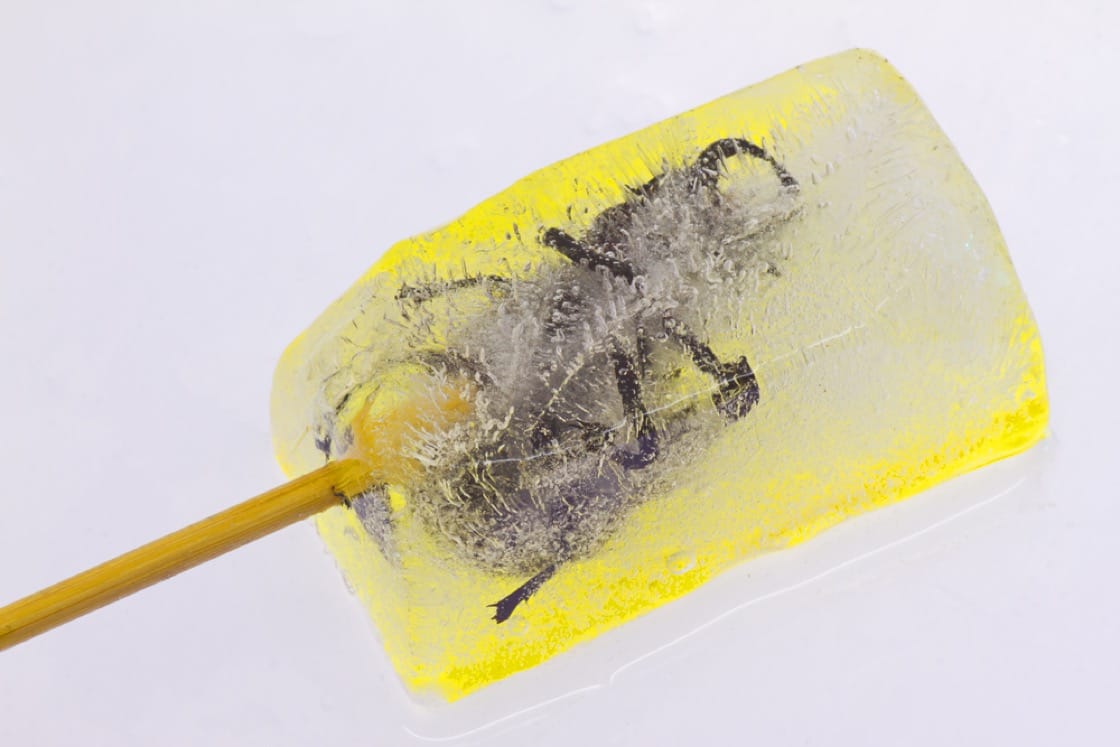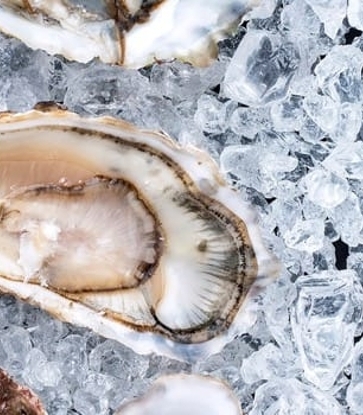For the past couple of decades, something that would have been inconceivable in the mainstream has become a hot topic of conversation—creepy crawly insects have been billed as a healthy and sustainable food option.
According to a report by the United Nations (UN), eating insects has numerous advantages. Not only are insects a great source of protein and other nutrients, an insect-based diet is also more environmentally friendly, and potentially a solution to the world’s food shortage crisis. Many big names in Hollywood, such as Angelina Jolie, Salma Hayek and Zac Efron, have already taken their first bite of this alternative produce, using their influence to trigger a discussion about the issue.
Many people have problems co-existing in the same space with our six-legged friends, let alone eating them as a kind of sustenance. Setting aside the beef, pork, fish and crustaceans we are used to, it is perhaps time to explore the world of entomophagy. Who is suitable for such diet? And how should we cook these insects?

Why is everyone talking about eating insects?
The surge of insects has a lot to do with the UN. With the world’s population expected to surpass nine billion by 2050, the international organization is now pushing for insects to be included in our diet. As traditional food production continues to struggle to catch up with the growth of human population, the hexapods are seen as the answer to the imminent hunger crisis.Substituting meat with insects is an effective way to cut back usage of land, water and feed on farming. It can also alleviate global warming—insects emit merely 1% of the greenhouse gases released by the conventional herds. From a waste reduction standpoint, there are even more contributions insects make to the atmosphere. For example, mealworms can survive by eating plastic foam. Stanford University reports that a hundred mealworms can consume 40 grams of plastic foam every day.
Insects boast a much higher efficiency of conversion than other animals. To put it simply, for every 45 kilograms of feed, it yields 4.5 kilograms of beef, in comparison to 20 kilograms of grasshoppers—the numbers are pretty staggering.
Environmental impact aside, something can be said about the insects’ influence on our health too. Many profit-maximizing meat producers nowadays feed their animals with antibiotics. A case can be made that chemical-free insects are healthier and more organic. That is why Hollywood stars have tapped into the movement. Jolie once served a meal of scorpions and spiders. Speaking of her bug-eating experience, she said, “Crickets, you start with crickets. Crickets and a beer. And then you move up to tarantulas.”
Mexican-born Hayek grew up eating all kinds of insects, something integral to the food culture of her homeland. Her favorite insect dishes are deep-fried ants with guacamole and smoked grasshoppers. After tasting them, actress Shailene Woodley and Efron were also positive about the insects as the food of our future. Needless to say, the ball has really started rolling on this unlikely culinary trend.

Which types of insects can be eaten?
The Food and Agriculture Organization of the United Nations names 1,900 types of hexapods edible among more than 1 million insect species living in the world. The most commonly eaten ones are beetle, caterpillar, bee, ant, grasshopper and cricket. At the top of the list, there are 350 kinds of beetles that are edible.In fact, insects have long colonized the food industry without most of us knowing. One of the examples is carmine, a food coloring extracted from female cochineal. In other cases, certain food items unavoidably contain dead insects. The U.S. Food and Drug Administration even specifies the maximum amount of insects and their eggs allowed in the products circulated in the market: every 100 grams of chocolate can’t have more than 60 insect fragments; there can’t be more than 10% of bugs inside coffee beans; no more than five eggs of flies can be found in fruit juice. Look at it this way: chances are you have already eaten insects in one form or another.

What benefits does entomophagy bring?
Insects are now promoted as a source of protein. Scientists declare they are more efficient in converting this specific nutrient. They have a 60% efficiency, leaving burgers far behind at 18%. Media outlets are practically trumpet reports comparing the protein content between insects and poultry—caterpillars have 50% more protein than chicken; beetles contains one to two times more protein than red meat; bees and ants have twice the amount of chicken eggs; red palm weevils offer twice the amount compared to pork; crickets have 20% more than beef. In addition, they also possess unsaturated fatty acid, just like fish.
So, can people ever be at ease eating insects?
Insects could use a new branding campaign for a better public image. People instinctively assign negative connotations to it when they hear you just ate bugs, but things might sound more palatable if you call it something different—or in certain cases—something original in the languages of where the insects are found. Escamoles, ant larvae in the Nahuatl language, is a delicacy in Mexico. Ant is known in different locations as chintuga, tsiswa, esunsun, chiswa or inswa. Calling the insects by their binomial names—Bombyx mori for silkworm, Tenebrio molitor for mealworm, Locustoidea for locust, Achroia grisella for waxworm—might also help diners get past their prejudice.But there is another way to make the insects “disappear” in the dishes: grinding them into powder for usage in cakes, bread, pie and many types of desserts. Renowned chefs across the world have been channeling their expertise into creating mouth-watering dishes out of insects. The ant was once the star of noma. And Grub Kitchen, the first insect-based restaurant in the United Kingdom, unabashedly glorifies the taste of various hexapods, offering dishes such as mealworm hummus and cricket seasoned with chile.
Much-admired Fazer Bakery in Finland offers cricket bread that no one can tell is any different than regular bread. Audubon Butterfly Garden and Insectarium, the largest independent insect museum in the United States, celebrates the museum’s subjects with a creative insect menu at its café. Chef David Gordon published The Eat-a-Bug Cookbook to give adventurous home cooks some off-the-beaten-path culinary ideas. Finally, the spirit of the insect diet is perfectly encapsulated in a bottle of British gin made with ants.
On the other hand, insect snacks on the streets are hardly anything new. For the people in certain countries, they are affordable and familiar tastes. Some fine examples include Thailand’s non mai phai (fried bamboo worms) and khai mot daeng (red ant’s egg salad). Fire-grilled tarantula is a Cambodian favorite, with a texture that's similar to chicken, and Cambodians are equally enamored with fertilized female crickets, which are believed to help reduce cholesterol levels and bring longevity. South Africans are partial to smoked mopane worms. Deep-fried silkworm pupae are a common Shandong snack. Mexicans like to preserve a butterfly caterpillar in their famous spirits. Aquatic flies find their way to Japanese kitchens, cooked with sugar and soy sauce. The list goes on—it’s a complex culinary culture of its own right.

Who are eating insects? And who can’t eat insects?
There are 3,071 societies in 109 countries which have an established custom of eating insects—some 2,086 kinds of them. Africa is the leading insect-consuming continent, with 36 countries of the continent pursuing such a diet. On the other end of the spectrum, insects are served as food in only 11 countries in Europe and the Americas. Wealth might have less to do with such differences than the living habits of the insects. The warmer, tropical climate is preferred by the majority of these creatures. In fact, in Africa one can find dozens of times more insect species than in Europe.However, insects aren’t something anyone can eat. Those who are allergic to crustaceans like shrimp are likely to also be allergic to insects. Similar cases have been found in different parts of the world. Apart from that, the chitin and shells they possess are very difficult to digest. That’s why their legs and wings need to be removed before cooking, and softer pupae are so often eaten. The likes of beetles, cockroaches and rice weevils may be hard to swallow, both literally and metaphorically, so to avoid indigestion and allergic reactions, take the necessary precautions before diving into the trend full-speed.

Is it right to eat insects?
Eating insects can be a cultural or traditional practice, but there hasn’t been much progress in the law enforcement front to ensure we can eat them safely. Belgium is the first country to legalize insect-eating, declaring 10 varieties edible, including crickets, grasshoppers and mealworms. From the religious point of view, Buddhism, with its stance against killing, doesn’t concur with the diet. For the Jewish population, the Book of Leviticus mentions that locusts, crickets and grasshoppers are kosher. Opinion varies in Islamic countries, depending on the tradition of the location in discussion. While the Koran doesn’t affirm this, strict believers insist insects are haram (forbidden).
What are the potential risks?
As with everything, nothing is a 100% healthy, and insects aren’t an exception. Even if they are grown domestically, certain risks still exist. Some really harmful substances to our health could reside in their small bodies.Scientists point out that if insects are not raised properly or under the appropriate weather and environment, large-scale production could lead to the insect equivalent of mad cow disease or avian flu. The insects could also be contaminated by heavy metal, or carry pesticides or parasites. Before eating, be sure to find out their origin and cook them thoroughly, just as you do with any other food ingredient. The European Food Safety Authority warns that there are biological, chemical and environmental risks for us to consume insects as a common food. The current level of research and reports are not sufficient to support this diet.

Are there any controversies or causes for concern?
While there are positive effects of insect eating on Mother Earth, the debate takes a turn to the realm of controversy when the question of ethics comes up. We’re talking about tens, or even hundreds of thousands of lives. Humanist organizations raise the point that the production of edible insects on an industrial scale might be the start of a bloodshed. For a person to get as much protein as in a piece of steak, thousands of crickets might have to be killed. Some experts add that insects are sensitive to the change of temperature, and high heat cooking could inflict great pain to them. Instead of spending so much time and money on this new trend, some environmentalist organizations suggest using the resources on promoting a plant-based diet instead.The future of this futuristic diet is challenged by some scientists, who proclaim it’s nothing more than a possibility right now. We still lack the legal support and an optimal system to solve the problems brought by mass production. A catastrophe to the ecosystem could take place if the insects escape from where they are kept. What can we do to prevent that from happening? Apart from that, since the insects will be grown in greenhouses, would mass production set off a new wave of greenhouse effects?
While insects on paper boast rich reserves of protein in their bodies, medical experts worry their nutritional value might not hold after massive breeding. Domesticated cricket is only slightly superior to chicken in protein content. Surveys also reveal most crickets fed with food waste and spent grain die before they even reach maturity. There are just so many angles to examine in pondering this complicated matter.










